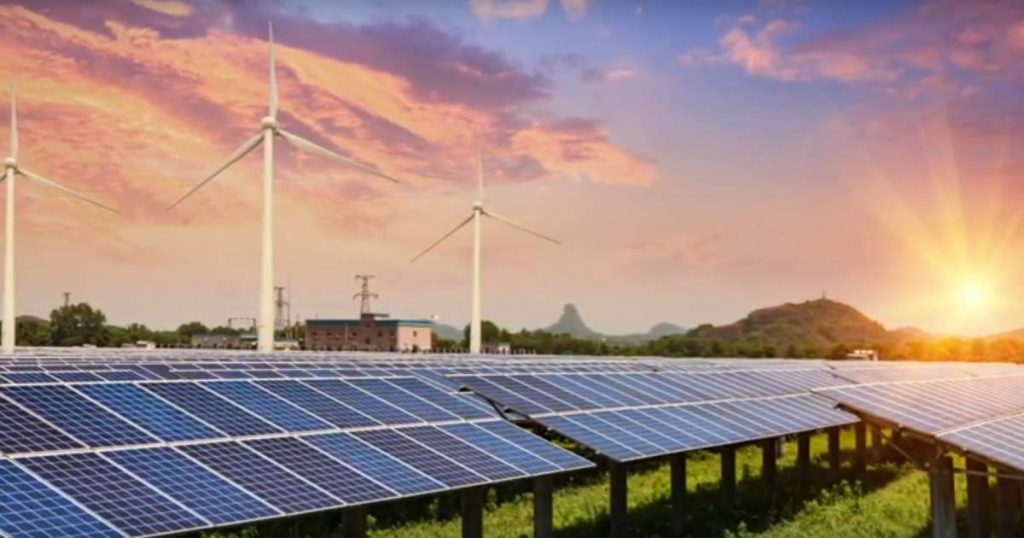A new inquiry by the New South Wales Legislative Assembly’s Environment and Planning Committee is delving into the economic opportunities for renewables in the state, and how to support communities affected by changing resource markets.
Announced on Wednesday by Committee Chair Alex Greenwich MP, the inquiry is inviting feedback from all interested parties, particularly those in communities that will be impacted by the changing face of energy in the state.
“An important part of transitioning to renewable energy sources is minimising the disruption in affected communities,” said Mr. Greenwich. “This involves understanding energy market forecasts in NSW and building economic resilience”.
The inquiry will also examine the role of different investment models and government policies, and cover other energy-related issues such water security, the environment and public health.
Deputy Chair of the inquiry is Felicity Wilson (LIB), with the other members being Anoulack Chanthivong (ALP), James Griffin (LIB) and Nathaniel Smith (LIB).
Mr. Greenwich is an Independent who has pushed for a transition from coal to renewable energy. His 2019 election policies included:
“..100% clean energy based on renewables and storage, greenhouse gas reduction targets, energy efficiency and solar incentives particularly for strata and rentals.”
More on the inquiry, including how to submit feedback, can be found here. Submissions close on September 19, 2019 and findings are expected to be reported in March or April next year.
Mixed Reactions
Hunter Renewal is strongly supporting the initiative, but not everyone thinks the inquiry is a good idea.
“NSW needs action now on climate change and a transition to renewable energy, not yet another inquiry,” said Adam Searle MLC.
Action on climate change and boosting renewables is always a good thing, but the inquiry doesn’t seem to be focused on an “if” in relation to renewable energy but how to best deal with an inevitable transition; both in terms of local energy production and exports of coal.
While coal industry bodies have painted a rosy picture for the future of coal in New South Wales, the Institute for Energy Economics and Financial Analysis said last year New South Wales coal export volumes are facing a terminal long-term decline.
A global shift away from the problematic little black (and brown) rock could seriously impact communities such as those in the Hunter Valley and Newcastle regions. A report released early this year found the Hunter region faces 5,000 job losses if coal use contracts globally and no action is taken.
This inquiry appears to have its roots back in March this year, when Mr. Greenwich, Lake Macquarie MP Greg Piper and Independent member for Wagga Wagga Dr. Joe McGirr wrote to the NSW Premier and Opposition Leader regarding a transition plan and calling for all major parties to commit to a 10-year adjustment strategy for coal mining communities
“In a post carbon economy, there are great opportunities for regional communities like the Hunter including agriculture and wine, tourism and renewable energy,” they stated. “These diverse industries boost job creation while better preserving local soil, air quality, water and biodiversity.”


 RSS - Posts
RSS - Posts



Hi Michael,
You state in your post:
“While coal industry bodies have painted a rosy picture for the future of coal in New South Wales, the Institute for Energy Economics and Financial Analysis said last year New South Wales coal export volumes are facing a terminal long-term decline.”
I draw your attention to more recent (i.e. July 10) IEEFA information: “Japanese Thermal Coal Consumption Approaching Long Term Decline: Australia’s Biggest Export Destination to Transition Away from Coal”, by Simon Nicholas and Tim Buckley; that examines the momentum away from thermal coal in Australia’s key export market.
This report highlights that Japan’s pipeline of new coal-fired power plants collapsed 64% in the last four years, and the Executive Summary concludes with:
“With demand for imported thermal coal in NSW’s big four export destinations to continue to decline, the market is set for long-term oversupply, lower prices and lower royalties.
Continuing to approve new thermal coal mines in Australia will add more production into an oversupplied market. A cessation of new thermal coal mine approvals represents a rational economic step in the face of a declining market.”
See: http://ieefa.org/wp-content/uploads/2019/07/Japan_Coal_July-2019.pdf
The Australian Government’s Office of the Chief Economist published on July 1 their “Resources and Energy Quarterly June 2019” which included these statements (from page 50):
“Compared to the forecast in the March 2019 Resources and Energy Quarterly, Australia’s forecast thermal coal export earnings have been revised down by $2.9 billion in 2019–20 and by $3.1 billion in 2020–21. The revision reflects a lower forecast benchmark thermal coal price, which declined at a faster-than-expected pace in the June quarter of 2019, due to weak Asian demand amid a well-supplied market.”
Australia’s thermal coal export earnings by destination in 2018 (from page 43) were:
• Japan: 39%;
• China: 24%;
• South Korea: 15%;
• Taiwan: 11%;
• India: 2%; and
• Rest of the World: 9%.
See: https://www.industry.gov.au/data-and-publications/resources-and-energy-quarterly-june-2019
Adani’s Carmichael mine, if it becomes operational, will likely make thermal coal mining jobs in NSW’s Hunter Valley and Queensland’s Surat and Bowen Basins disappear faster.
See: https://www.abc.net.au/news/2017-07-06/galilee-basin-mining-project-will-reduce-coal-output:-research/8682164
Also: http://www.tai.org.au/sites/default/files/P488%20Galilee%20Basin%20Development%20employment%20impacts%20%5BWEB%5D_0.pdf
And if you look at my Presentation Slides (#13 #14) you can see that the longer-term indicators suggest global thermal coal demand is likely to be in a sustained decline in the 2020s.
See: https://www.ipcn.nsw.gov.au/resources/pac/media/files/pac/projects/2019/05/ulan-coal-mod-4/public-meeting/presentations/geoff-miell-presentation-slides.pptx
As Australian thermal coal mines become increasingly uneconomic to continue, the question remains whether the coal mine companies will honour their obligations to remediate their mine sites or declare insolvency to leave it to governments (and taxpayers) to clean-up any mess left behind.
See: https://www.newcastleherald.com.au/story/6281401/unacceptable-strike-rate-five-hunter-coal-mines-fail-rehabilitation-audits/